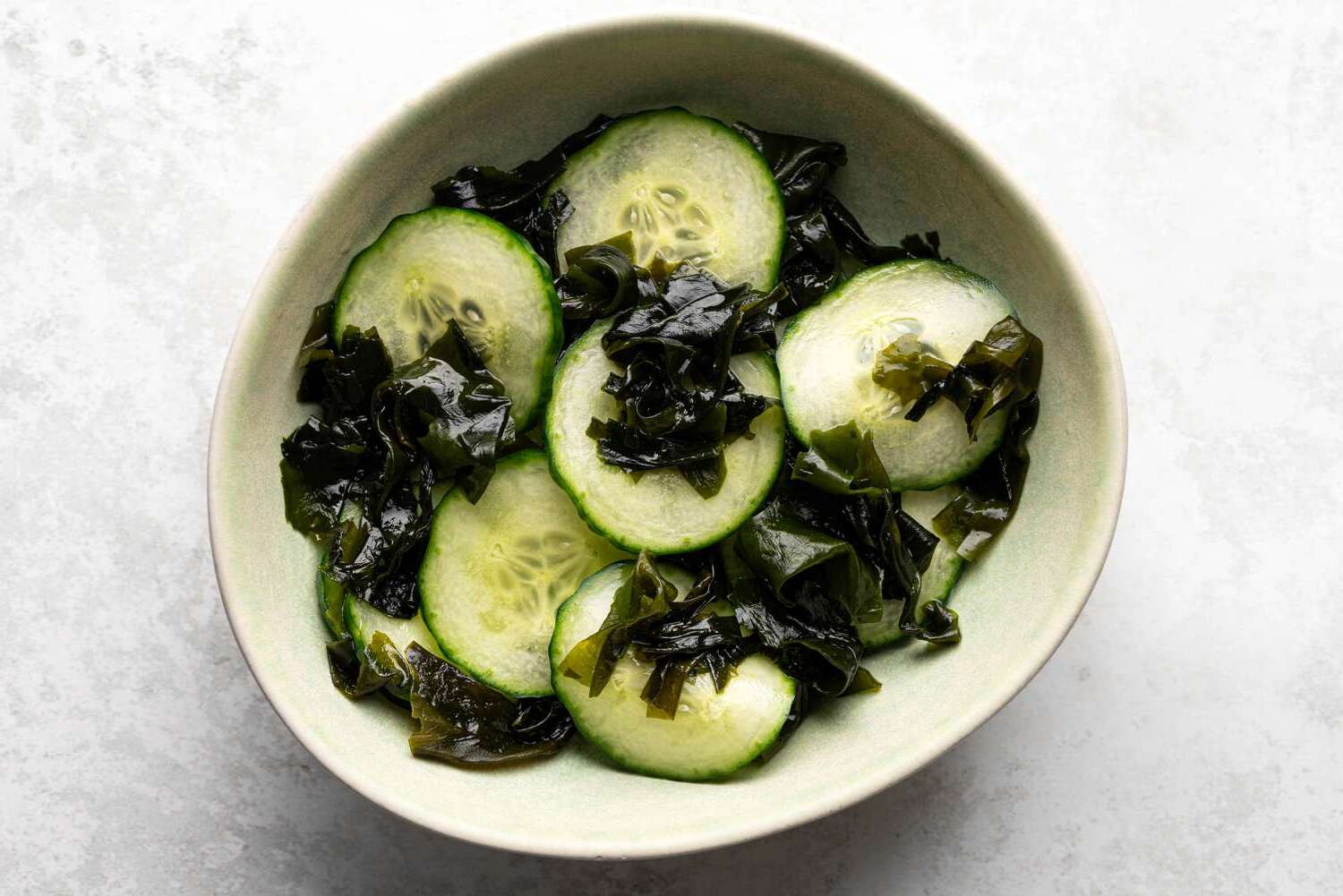
Ever wondered what makes that vibrant, tangy seaweed salad at your favorite sushi spot so intriguing? Seaweed salad isn't just a delicious appetizer; it's a nutritional powerhouse packed with benefits that might surprise you. From its humble beginnings in the ocean to becoming a staple on menus around the globe, this dish has a fascinating story. Did you know that seaweed plays a crucial role in marine ecosystems? Or that it's been a part of human diets for centuries? Dive into the world of seaweed salad with us, where we'll uncover 15 amazing facts about this oceanic delicacy. Get ready to have your mind blown by how something so simple can be so incredibly beneficial and interesting!
Key Takeaways:
- Seaweed salad is a nutritious and versatile dish with roots in Japanese cuisine, offering a unique blend of flavors and textures from various types of seaweed.
- With its rich nutritional benefits, minimal environmental impact, and global popularity, seaweed salad represents the future of sustainable and delicious food choices.
What Exactly Is Seaweed Salad?
Seaweed salad, often vibrant green and tangy, is a popular dish in Japanese cuisine. It's made from various types of seaweed, each contributing unique flavors and textures. This dish is not only a feast for the eyes but also packed with nutrients.
Origins of Seaweed Salad
- Seaweed salad has its roots in Japan, where it's known as "goma wakame." This dish reflects the Japanese tradition of utilizing local sea produce, showcasing the country's deep connection with the ocean.
Nutritional Benefits
-
Seaweed is a powerhouse of nutrition, rich in vitamins A, C, and K, as well as minerals like iodine and calcium. Eating seaweed salad can boost your intake of these essential nutrients.
-
It's also high in fiber and protein while being low in calories, making it an excellent choice for those looking to maintain or lose weight.
Types of Seaweed Used
- The most common type of seaweed in seaweed salad is wakame, known for its soft texture and sweet flavor. Other varieties, such as hijiki and arame, may also be included for their distinct tastes and health benefits.
How It's Made
- Preparing seaweed salad involves rehydrating dried seaweed and then mixing it with a dressing. The dressing typically includes soy sauce, vinegar, sesame oil, and sometimes chili for a kick.
Culinary Uses Beyond Salad
- Beyond salad, seaweed finds its way into soups, sushi, and even snacks. Its versatility in the kitchen is vast, with each form offering a unique way to enjoy its benefits.
Environmental Impact
- Cultivating seaweed for salads and other dishes has a minimal environmental footprint. It requires no freshwater, fertilizers, or land, making it a sustainable choice.
Health Considerations
- While seaweed salad is generally healthy, it's wise to consume it in moderation due to its high iodine content. Excessive iodine intake can lead to thyroid issues.
Flavor Enhancements
- Chefs often add sesame seeds, chili flakes, or ginger to seaweed salad to enhance its flavor. These additions bring depth and complexity to the dish.
Global Popularity
- Seaweed salad has gained popularity worldwide, not just in Japan. Its unique taste and health benefits have made it a favorite in many countries.
DIY Seaweed Salad
- Making seaweed salad at home is straightforward. With dried seaweed and a few simple ingredients for the dressing, anyone can prepare this nutritious dish.
Pairing with Other Foods
- This salad pairs wonderfully with seafood dishes and rice. Its refreshing taste complements rich flavors, making it a perfect side dish.
Cultural Significance
- In Japan, seaweed salad is more than just food; it's a cultural symbol. It represents the country's maritime heritage and culinary innovation.
Future of Seaweed Cuisine
-
As interest in sustainable and nutritious foods grows, seaweed's role in global cuisine is set to expand. Innovations in seaweed-based dishes continue to emerge, promising exciting culinary developments.
-
With its blend of taste, nutrition, and sustainability, seaweed salad embodies the future of food. Its journey from traditional Japanese kitchens to global menus highlights its universal appeal and enduring charm.
Seaweed Salad: A Deep Dive into Its World
Seaweed salad, more than just a side dish, is a powerhouse of nutrition and flavor that's been making waves in culinary circles. Packed with vitamins, minerals, and antioxidants, it's a testament to the ocean's bounty. From its vibrant colors to its unique texture and taste, seaweed salad offers a delightful experience for the adventurous eater. Whether you're a long-time fan or a curious newcomer, understanding the benefits and versatility of seaweed salad can enrich your dining experience. It's not just food; it's a journey into the heart of the sea's culinary secrets. Next time you spot seaweed salad on the menu, remember, you're not just choosing a healthy option, but embracing a world of flavor and tradition that spans centuries. Dive in, the ocean's harvest awaits!
Frequently Asked Questions
Was this page helpful?
Our commitment to delivering trustworthy and engaging content is at the heart of what we do. Each fact on our site is contributed by real users like you, bringing a wealth of diverse insights and information. To ensure the highest standards of accuracy and reliability, our dedicated editors meticulously review each submission. This process guarantees that the facts we share are not only fascinating but also credible. Trust in our commitment to quality and authenticity as you explore and learn with us.


